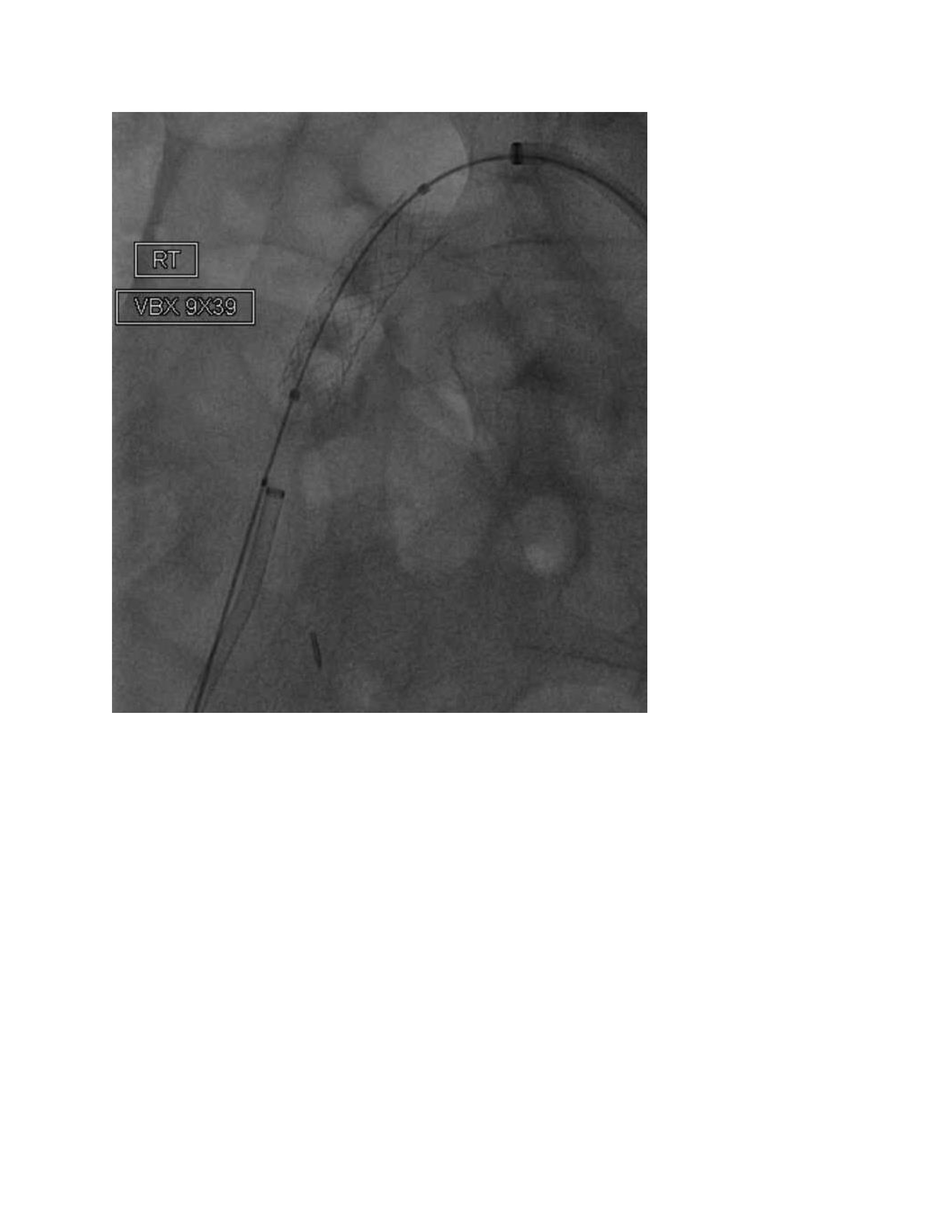Percutaneous Thrombectomy-Assisted Stent-Graft Placement for a Thrombotic Lower Extremity Lesion
Amanda G. Fobare, MD1, Barath R. Badrinathan, MD2, Ravi R. Rajani, MD1.
1Grady Memorial Hospital, Emory University, Atlanta, GA, USA, 2Emory University, Atlanta, GA, USA.
DEMOGRAPHICS: Endovascular therapies for arterial lesions with a significant thrombotic component can potentially be complicated by distal embolization. The use of temporary filters and occlusion balloons can help mitigate that risk, but leave residual clot within the arterial system that may need to be evacuated. Concomitant use of percutaneous thrombectomy devices during stenting and angioplasty may allow for safe, complete treatment of such lesions.
HISTORY: We present a 58-year-old woman, with a history significant for Protein S deficiency who presented to the hospital after a ground level fall. She complained of chronic claudication in her right leg that was worse since the fall. Computed tomography (CT) demonstrated severe atherosclerosis of the right common iliac artery with free-floating thrombus due to presumed plaque rupture. The decision was made to treat her with aspiration thrombectomy-assisted angioplasty and stent grafting.
PLAN: Bilateral femoral access was obtained under ultrasound guidance. A Penumbra CAT-6 aspiration thrombectomy device was introduced via the right-sided access and positioned distal to the known lesion. It was intermittently activated during any subsequent intervention across the segment of concern. The ulcerated plaque was crossed in an antegrate fashion and a long sheath was placed followed by deployment of a Gore VBX balloon expandable stent graft. Completion angiography demonstrated treatment of the primary lesion without any radiographic evidence of embolization into the right internal iliac artery or infrainguinal vessels. A total of 100mL of aspirated blood with a small thrombus was identified in the Penumbra canister. At one year follow-up, she has no right lower extremity complaints and an ankle brachial index of 1.1
DISCUSSION: The concomitant use of a distal percutaneous thrombectomy device may serve as a valuable adjunct in the treatment of atherosclerotic lesions with a large thrombotic component. 
Back to 2019 ePosters
